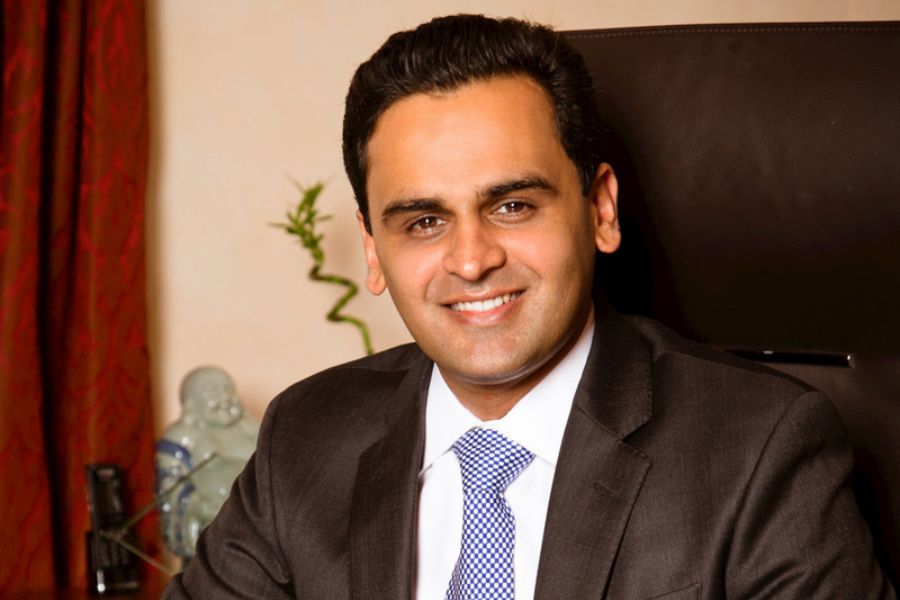Essence of Indian food in Germany
Global Foods Trading, set up in 1980s, continues to bring the taste of home to the Southeast Asian communities in Europe. India Business and Trade (IBT) spoke with Manav Bhandari, Managing Director, Global Foods Trade Gmbh, on the increasing diaspora of Indians in Europe and with that, increase in demand for ethnic India food.

IBT: Tell us a little bit about the inception of Global Foods Trading.
Manav Bhandari: My father is the founder of Global Foods Trading. He came here to Germany in the early 1980s. The business grew since then, because migration grew from Indians to Germany. And yeah, we expanded our business over the years, to different countries such as Barcelona, Paris, UK, Netherlands, and also Munich. And so, in these places, we have now six distribution hubs with approximately 9000 customers 250 employees and approximately 3000 products. Products are not only from India, they’re also from other countries such as Pakistan, from Sri Lanka or also Thailand.
IBT: What is the collaboration with Indian brands and what kind of Indian brand products you’re offering to the diaspora in Europe?
Manav Bhandari: Originally the business started with brands from UK, which grew, but then we started importing from India directly and we started importing brands such as Haldiram, MDH Gits. We are working with some of the largest F&B companies from India and distributing those brands and Europe.
IBT: Is there a higher demand of any particular Indian product?
Manav Bhandari: Definitely the largest demand for, if we speak about Indian products, then it is basmati rice. So, basmati rice is the most important one. It is being consumed, whether it is in the household or in the restaurants majorly and that takes the biggest punch of it. Then the big part comes with lentils and spices. After that, you can speak about snacks, such as Haldiram. Then you would be going to cosmetic products and healthcare products.
IBT: What is the demand of vegan food in Germany? What potential do you see of different vegan food?
Manav Bhandari: Yes, it is already. Germany is the market leader for vegan products in Europe itself. And there are many, many products already available here in hypermarket stores, which are only selling organic or vegan food. The demand of vegan products from India is definitely there. But what I’ve seen is the huge quality differences between products being produced in India versus products being produced in Germany. It’s the taste, the consistency, smell, structure, these products are still not up to the market standards of Germany. So, there needs to be some work done.
IBT: In an endemic era, a lot of emphasis has been given on the quality and the content of any product. So which are the other aspects where Indian manufacturers can do better?
Manav Bhandari: It’s very important that the products have to be EU compliant. It has to be pesticide free, meet a certain quality standard. And to achieve that, definitely Indian companies are struggling, because farmers are not maybe ready to use different kinds of medicine, which is obviously more expensive or does not give the yield what is being needed. Farmers will have to change, companies will have to change their discipline, and only then imports into European countries will be granted. Most important thing is products have to be EU compliant, according to the standards what are here. In terms of packaging, supply chain, obviously problems with that were there but in terms of packaging, everything is good. But the compliance is always an issue and has been always an issue.
IBT: Indian basmati rice is in good demand but what about the non-basmati rice variants? Are they getting the same kind of demand in the Europe?
Manav Bhandari: So non-basmati is definitely picking up. Products like sona masuri rice, sela rice, they’re having an increasing demand. The reason is because of migration in Europe, Indians who are coming from those regions who are used to this rice. They prefer this kind of rice and are also consuming this rice. So, this demand is increasing. In basmati we’ve seen a change in the last let’s say 20 years ago, it was traditional basmati rice, it has changed to extra long basmati rice, that is the level 21 grain, which is being used preferably in restaurants and also for consumers, because it’s a beautiful long grain, it looks good. So these are the main variants, but also we see a huge demand increasing in jasmine rice also.













Leave a comment